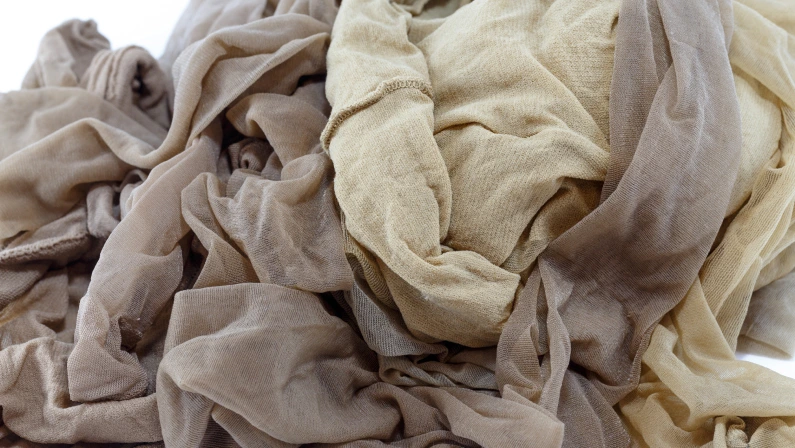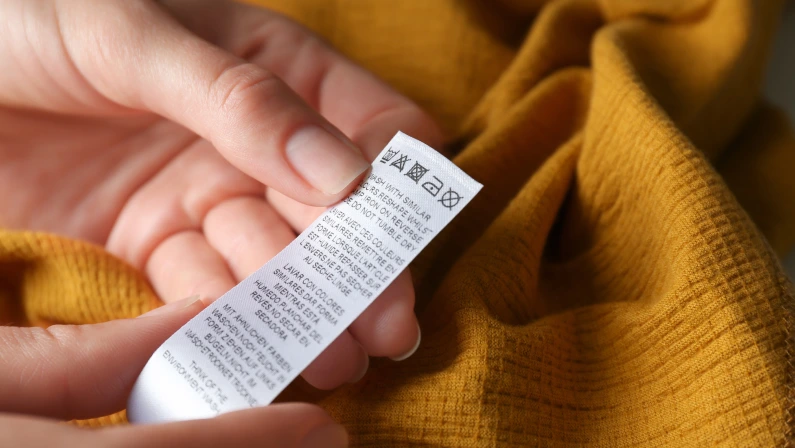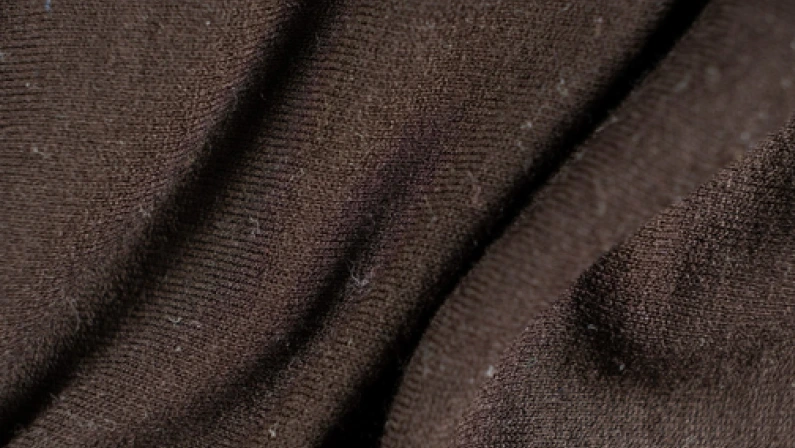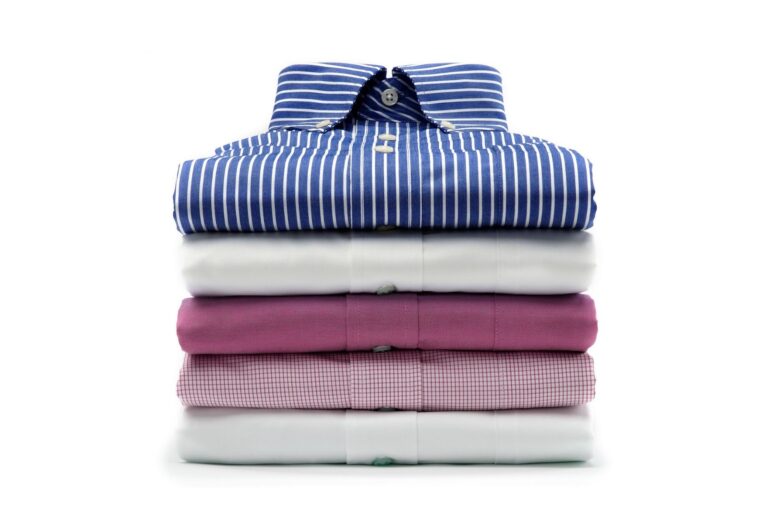Have you ever pulled a favorite garment out of the laundry, only to find it’s a size smaller? It’s a frustrating experience, especially when you’re not sure why it happened.
This guide is for anyone who has ever wondered, “does polyamide shrink?” We’ll explore the science behind this popular synthetic fiber, how it reacts to heat and water, and the best ways to care for your polyamide clothing.
What Is Polyamide Fabric?
Polyamide fabric is a synthetic polymer, a class of materials made from long chains of repeating molecules. It’s known for its incredible strength, elasticity, and resistance to abrasion. This man-made fiber is hydrophobic, meaning it repels water, which makes it fast-drying and resistant to mildew.
Because of its durability and lightweight feel, it’s a popular choice for everything from activewear to outdoor gear. The fiber can be spun into a variety of textures, from silky and smooth to textured and matte.
Is Polyamide the Same as Nylon?

While often used interchangeably, nylon is a specific type of polyamide. Think of it like this: all nylon is polyamide, but not all polyamide is nylon. Nylon was one of the first commercially successful synthetic fibers and remains the most famous type of polyamide.
Other types exist, but nylon is the one you’ll most likely encounter on clothing tags. They share many properties, including strength and resistance to shrinking, but the term “polyamide” is a broader category that includes other similar synthetic fibers.
Does Polyamide Shrink When Washed or Exposed to Heat?
A common question is “does polyamide shrink?” The answer is generally no, but with a few important caveats. Polyamide fibers are manufactured under specific conditions to be highly stable. They have a strong molecular structure that resists shrinking when exposed to typical laundry conditions. However, extreme heat can cause the fibers to relax and tighten. This process is not the same as the shrinking you see in natural fibers like cotton or wool, which happens as the fibers absorb water and swell.
Instead, polyamide shrinkage happens when high heat melts and reforms the plastic-like fibers into a smaller, denser shape.
Can Polyamide Shrink in the Dryer?

Yes, polyamide can shrink in the dryer if the heat setting is too high. The high temperatures found in a conventional dryer can cause the polymer chains to contract. This is particularly true for delicate items and blends.
To avoid this, it’s a good idea to always use a low heat or air-dry setting for polyamide clothing.
The dry heat can also make the fabric brittle over time, which can lead to tears. So, while the fabric is resistant to shrinkage in normal circumstances, it is susceptible to damage from intense heat, so be careful.
How to Properly Wash and Dry Polyamide Clothing?
Caring for polyamide doesn’t have to be a chore. A few simple steps can keep your clothes in great shape for years to come.
- Wash with cold water and a gentle cycle: Using cold water helps preserve the integrity of the polyamide fibers and prevents them from contracting. A gentle cycle minimizes agitation, which reduces friction and potential damage to the fabric’s surface.
- Use a mild detergent: Harsh detergents with bleach or strong chemicals can break down the fibers over time. A mild, pH-neutral detergent is the best choice to gently clean the fabric without compromising its structure or color.
- Air-dry whenever possible: The best way to prevent your polyamide clothing from shrinking is to avoid the dryer altogether. Simply hang the garment on a line or lay it flat to dry. Polyamide’s quick-drying nature means it won’t take long.
- If you must use a dryer, use a low-heat setting: If you’re in a hurry, set your dryer to the lowest possible heat or “delicate” setting. Remove the item while it’s still slightly damp and let it finish air-drying. This will minimize the risk of shrinkage and damage.
How Does Polyamide Compare to Other Fabrics in Terms of Shrinkage?
When it comes to resisting shrinkage, polyamide is a top performer. Let’s look at how it holds up against other common materials.
- Cotton: Cotton is famous for shrinking, especially in hot water or a hot dryer. Its natural fibers absorb water and expand, and as they dry, they compact. Polyamide, by contrast, is highly stable and does not absorb water in the same way.
- Wool: Wool is another fabric that shrinks significantly when exposed to heat and agitation. The fibers have scales that interlock when agitated, causing the fabric to felt and shrink. Polyamide lacks this natural structure, making it much more resistant to shrinking.
- Rayon/Viscose: This semi-synthetic fabric is notoriously prone to shrinking. It can lose a significant amount of its size after the first wash, a problem that is far less common with polyamide. The stability of polyamide makes it a more reliable choice for fitted garments.
- Polyester: Polyester is very similar to polyamide in its resistance to shrinkage. Both are synthetic polymers with a stable molecular structure that does not readily contract. In fact, they are often blended together to create strong, durable fabrics that are highly resistant to shrinking.
What Are the Common Uses of Polyamide Material?
Polyamide material is incredibly versatile and can be found in a wide variety of products. Its durability, elasticity, and resistance to water make it suitable for many different applications. The fabric’s ability to be made into different forms, from strong ropes to sheer stockings, highlights its adaptability. You can find this remarkable material almost anywhere.
- Athletic wear: Because it’s lightweight, moisture-wicking, and stretchy, polyamide is a go-to for workout clothes.
- Swimwear: The water-repellent nature of polyamide makes it an excellent choice for swimsuits and board shorts.
- Outerwear: Its durability and wind resistance make it a great option for jackets, coats, and windbreakers.
How to Prevent Polyamide Fabric From Shrinking?

Preventing your polyamide fabric from shrinking is all about control. By controlling the conditions of washing and drying, you can keep your clothes looking new for longer. The key is to avoid high heat and harsh chemicals, which are the main culprits behind fiber damage. A little bit of care goes a long way.
- Read the care label: This is always the first step. The manufacturer provides specific instructions for a reason. Adhering to the label’s directions will help you avoid accidental shrinkage.
- Use a garment bag for delicate items: A mesh garment bag will protect your polyamide clothing from getting snagged or stretched by other items in the wash. This is especially useful for lingerie or activewear.
- Hand wash when in doubt: If you have a particularly delicate or expensive item, a gentle hand wash is the safest option. Simply use a basin with cool water and a mild detergent, swish the item around, and rinse it thoroughly before air-drying.
Your Polyamide Questions Answered
So, does polyamide shrink in dryers? For the most part, it is a highly stable and shrink-resistant fabric, especially when compared to natural fibers.
With the right care, your polyamide clothing will maintain its size and shape for a long time. The key is to avoid high heat, which can cause the polymer fibers to contract and damage the material.
Washing with cool water and air-drying can easily protect your favorite items. If caring for your clothes feels like a burden, consider a professional service.
For those seeking laundry delivery in Chicago, IL, SpinXpress offers expert care for all your garments, including those made of delicate polyamide material, so you can enjoy clean and fresh clothes without the worry.
Ready to say goodbye to laundry day? Visit SpinXpress today for reliable, professional laundry delivery services and let the experts handle your clothes.





